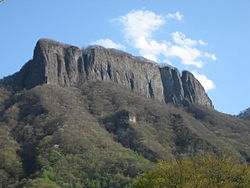Template:Short description Template:Use mdy dates Template:Expand Japanese
Template:Nihongo was a Japanese manga artist known for the popular Crayon Shin-chan series. He was born in Shizuoka City, Shizuoka Prefecture, Japan.
Personal life
In 1977, he graduated from Saitama Kasukabe technical high school (埼玉県立春日部工業高等学校). After graduating he attended a part-time design-related college but dropped out. In 1979, he joined an advertising company called POP Advertising. He made his debut as a cartoonist in 1987 when Weekly Manga Action began running his Darakuya Store Monogatari.
In August 1990, his series Crayon Shin-chan began running in Weekly Manga Action, the series started as a spin-off of the character Shinnosuke Nikaido (二階堂信之介) of Darakuya Store Monogatari. An animated series based on the comics began in 1992, and a Crayon Shin-chan boom followed the release of a 1993 animated film. For a year beginning in 1995, Usui's Super Shufu Tsukimi-San comic strip ran in the magazine Manga Life.
Usui was a devotee of Jehovah's Witnesses who had a church facility constructed adjacent to his home in 1994. He was known in the industry to read out the New Testament for a full 20 minutes at each meeting with his publisher and handing them out copies of the Bible as a gift.[1]
He and his wife raised two daughters; both had moved out of the house at the time of Usui's death.[2]
Death

On September 12, 2009, Usui's family reported him missing from his hometown of Kasukabe when Usui did not return from hiking in nearby Gunma Prefecture. On September 19, 2009, a body with clothes matching those described in the report filed by Usui's family was found at the bottom of a cliff at Mount Arafune in Gunma.[3][4][5] The body was identified by dental records and family members the next day as being that of Usui.[6] His camera was recovered and the final shot was taken from the cliff.[7][8]
His funeral was held September 23 in a private service.[9] It was attended by three thousand people.[10]
Legacy
ONE or Tomohiro, the creator of One Punch Man and Mob Psycho 100, cites the manga series Crayon Shin-chan by Usui as having influenced his decision to become a manga artist.[11]
Works
- May 1987 - Darakuya Store Monogatari (Template:Lang, Darakuya Sutoa Monogatari)
- 1990 - Office Lady Gumi (Template:Lang, Ōeru Gumi)
- 1990 - Crayon Shin-chan (Template:Lang, Kureyon Shin-chan)
- 1992 - Unbalance Zone (Template:Lang, Anbaransu Zōn)
- 1992 - Super Shufu Tsukimi-san (Template:Lang)
- 1992 - Scramble Egg (Template:Lang, Sukuramburu Eggu
- 1992 - Kabushiki-gaisha Kurubushi Sangyō 24-ji (Template:Lang)
- 1993 - Usui Yoshito no Motto: Hiraki Naotchau zo! (Template:Lang)
- 1993 - Hiraki Naotchau zo! (Template:Lang)
- 1993 - Super Mix (Template:Lang, Supā Mikkusu)
- 1993 - Mix Connection (Template:Lang, Mikkusu Konekushon)
- 1994 - Usui Yoshito no Buchikama Theater (Template:Lang, Usui Yoshito no Buchikama Shiatā)
- 1998 - Atashira Haken Queen (Template:Lang, Atashira Haken Kuīn)
- 2000 - Usui Yoshito Connection (Template:Lang, Usui Yoshito Konekushon)
- 2002 - Shiwayose Haken Gaisha K.K. (Template:Lang)